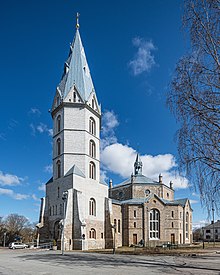
Narva is a municipality and city in Estonia. It is located in Ida-Viru county, at the eastern extreme point of Estonia and European Union, on the west bank of the Narva river which forms the Estonia–Russia international border. With 54,409 inhabitants Narva is Estonia's third largest city after capital Tallinn and Tartu.
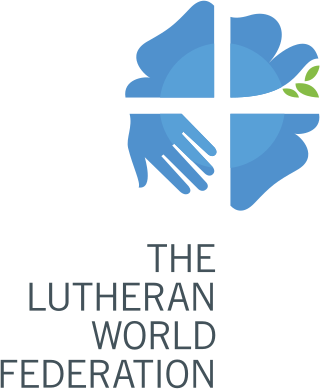
The Lutheran World Federation is a global communion of national and regional Lutheran denominations headquartered in the Ecumenical Centre in Geneva, Switzerland. The federation was founded in the Swedish city of Lund in the aftermath of the Second World War in 1947 to coordinate the activities of the many differing Lutheran churches. Since 1984, the member churches are in pulpit and altar fellowship, with common doctrine as the basis of membership and mission activity.

The Estonian Evangelical Lutheran Church is a Lutheran church in Estonia. EELC is member of the Lutheran World Federation and belongs to the Community of Protestant Churches in Europe. It is also a member of the Porvoo Communion, putting it in full communion with the Church of England and other Anglican churches in Europe.

The Evangelical Lutheran Church of Latvia is a Lutheran Protestant church in Latvia. Latvia's Lutheran heritage dates back to the Reformation. Both the Nazi and communist regimes persecuted the church harshly before religious freedom returned to Latvia in 1988. In contrast to Estonia, where state atheism reduced the once 80% Lutheran majority to barely 10% by 2011, the Latvian Lutheran church saw its membership drop to around 20% but has recovered and now includes approximately 30% of the population. The church reports having 250,000 members according to the Lutheran World Federation.

St James's Cathedral is the Roman Catholic cathedral of Riga in Latvia. The cathedral is dedicated to Saint James the Greater. The building is part of the Old Riga UNESCO World Heritage Site and lies directly opposite the House of the Livonian Noble Corporation, the meeting place of Latvia's parliament the Saeima.

The Estonian Orthodox Church of the Moscow Patriarchate is a semi-autonomous church in the canonical jurisdiction of the Patriarchate of Moscow whose primate is appointed by the Holy Synod of the latter.

The Lutheran Church of Saint Peter and Saint Paul is a Lutheran church located in Saint Petersburg, Russia. It is one of the oldest and largest Protestant churches in Russia, and the seat of the Archbishop of the Evangelical Lutheran Church in Russia, Ukraine, Kazakhstan and Central Asia. The church have valid apostolic succession by the orthodox and lutheran episcopacy.

The Evangelical Lutheran Church of Saint Mary is an Evangelical Lutheran church located in Saint Petersburg, Russia. It was built in 1805 and refurbished in 2002. Its address is: Bolshaya Konyushennnaya Ulitsa 8A, off Nevsky Prospekt. It is usually called the Finnish church and is one of the oldest and largest Protestant churches in Russia.

The Evangelical Lutheran Church of St. Matthew is the oldest Lutheran congregation in North America. The congregation is a member of the Lutheran Church–Missouri Synod. Since 2006, the congregation has been located at the Cornerstone Center, 178 Bennett Avenue in Manhattan, New York City. The congregation has been known by different names, only acquiring the name St. Matthew in 1822 and using it exclusively since 1838.
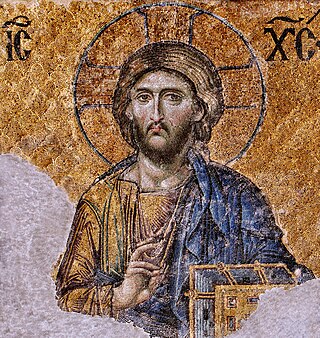
Eastern Orthodoxy in Estonia is practiced by 16.5% of the population, making it the most identified religion and Christian denomination in this majority-secular state after surpassing Lutheran Christianity with 9.1% for first time in country's modern history. Eastern Orthodoxy, or more specifically Eastern Orthodox Christianity, is mostly practiced within Estonia's Russian ethnic minority and minority within native population. According to the 2000 Estonian census, 72.9% of those who identified as Orthodox Christians were of Russian descent.

The Old Church of Helsinki, designed by Carl Ludvig Engel and completed in 1826, is an Evangelical Lutheran church in Helsinki. The oldest existing church in central Helsinki, the church was originally planned as a temporary building as the Ulrika Eleonora Church constructed in 1727 had become too small for the congregation and the new church, Helsinki Cathedral, would not be completed until 1852. However, the city's rapid population growth from the early 19th century onwards ensured that the church would remain needed, and also necessitated the construction of many other churches.

The Evangelical Lutheran Church in Russia, Ukraine, Kazakhstan and Central Asia, also known as the Evangelical Lutheran Church in Russia and the Other States (ELCROS), is a Lutheran denomination that itself comprises seven regional Lutheran denominations in Belarus, Georgia, Kazakhstan, Kyrgyzstan, Russia, Ukraine, and Uzbekistan as well as individual congregations in Azerbaijan, Tajikistan, and Turkmenistan. Established in its current form in 1999, ELCROS currently has about 24,050 members in more than 400 congregations within its jurisdiction.

The Evangelical Lutheran Church of Ingria is a Lutheran church in Russia. It is the second largest Lutheran church in Russia, with 90 congregations and 15,000 members, and is mostly active in Ingria and Karelia.
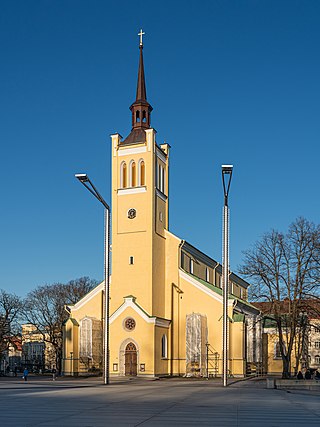
St. John's Church is a large Lutheran parish church in Tallinn, Estonia. It is dedicated to Saint John the Evangelist, a disciple of Jesus Christ and author of the fourth Christian Gospel. Construction began in 1862, and the church was opened in 1867.
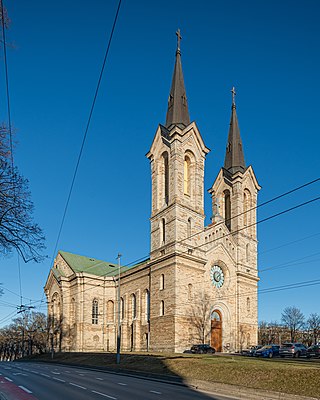
Charles's Church is a Lutheran church in Tallinn, Estonia, built 1862–1870 to plans by Otto Pius Hippius. It is Tallinn's grandest 19th-century church.
The Mission Diocese, officially the Evangelical Lutheran Mission Diocese of Finland, is an independent confessional Lutheran "ecclesial structure" in Finland. The Mission Diocese considers itself to be "part of ‘the one, holy, catholic and apostolic church’" to be "truly a church" and to act "fully independently as a church", although it has not applied for state-recognition as a registered religious community. The Mission Diocese has its origins in the conservative movements of the Evangelical Lutheran Church of Finland (ELCF) and it self-identifies as existing in the same continuum of Lutheran faith and congregational life of the ELCF whose spiritual heritage it cherishes, yet not being part of its administrative structures.

The Resurrection of Christ Cathedral is a Neo-Byzantine style Estonian Orthodox Church of Moscow Patriarchate located in Narva, Estonia. The church was constructed between 1890 and 1896 to cater to the religious needs of the cotton mill workers of the Krenholm Manufacturing Company. The cathedral was the only building standing after the bombing of the city in 1944 during World War II.

Villu Jürjo is an Estonian Lutheran cleric who is most notable for voting for the Estonian restoration of Independence.

Tiit Salumäe is an Estonian prelate who is the current bishop of the Western and Northern Region in Estonia, whose episcopal seat is in Haapsalu.
